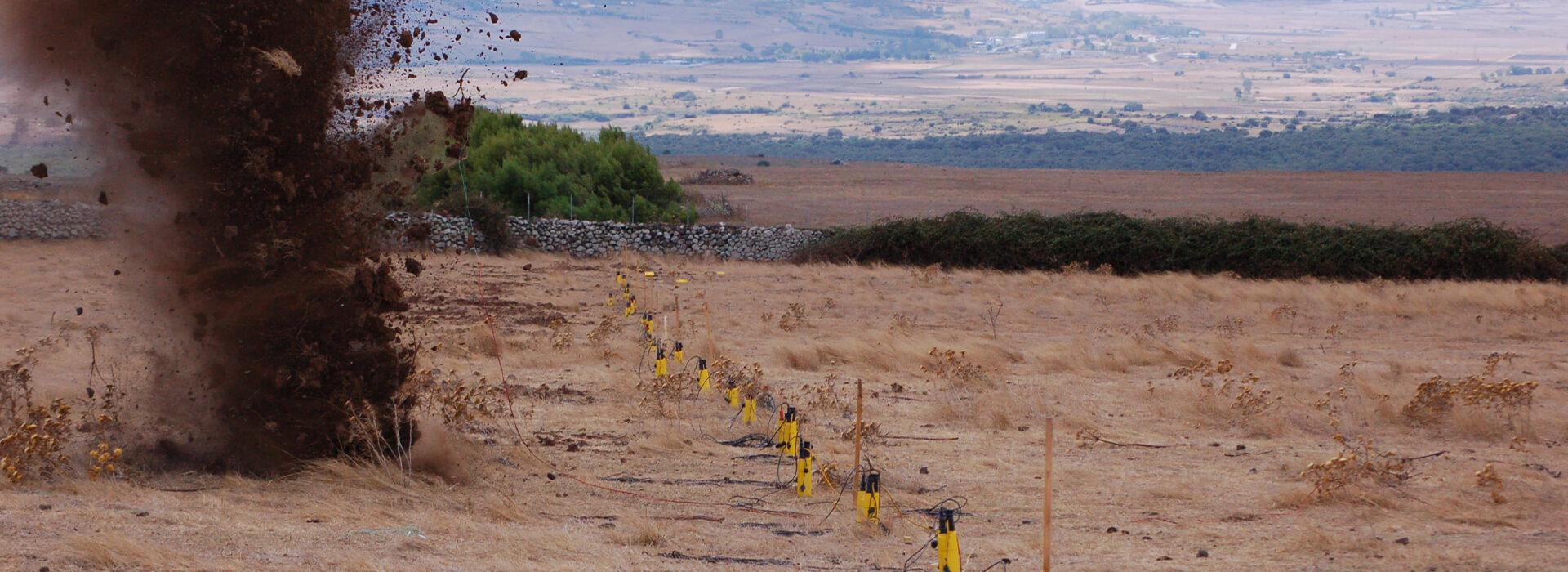Execution of surface seismic surveys
We perform surface seismic surveys using P-wave and S-wave refraction seismic method and reflection seismic method, MASW method, REMI method, Nakamura measurements for accurate subsurface characterization.
Environmental vibration measurements
Surface seismic surveys
Refraction in p & s waves
Refraction in p & s waves
Refraction seismic survey is a method of investigation based on the measurement of the travel time that elastic waves (P or S waves), generated in the ground at a point-source, take to reach receivers (geophones) placed on the ground surface and aligned with the point of energization. The distance between the geophones and that of the energization point are chosen according to the depth and geological context to be investigated.
Application
- To evaluate the mechanical and physical properties of soils
- compactness of the materials that make up the soil
- Stadiums, canals, geotechnics, polluted areas, tunnels, landfills, construction, etc.
Reflection
Reflection
The reflection seismic method is based on sending waves into the subsoil and acquiring the return signal by means of oscillators (geophones) that record the different types of waves that after propagating in the ground and in the subsoil and have undergone different phenomena of partition energy when they reach the surface again.
In reflection seismic, second arrivals are used, that is, reflections of one or more discontinuities that characterize the subsurface being investigated. The technique is in fact based on the recording of the times that elapse between the instant in which a specific elastic impulse is generated on the surface and the instant of reception of the impulse generated by one or more reflections on as many surfaces (reflecting) placed below the ground plane.
In reflection seismic, second arrivals are used, that is, reflections of one or more discontinuities that characterize the subsurface being investigated. The technique is in fact based on the recording of the times that elapse between the instant in which a specific elastic impulse is generated on the surface and the instant of reception of the impulse generated by one or more reflections on as many surfaces (reflecting) placed below the ground plane.
Application
- deep oil surveys
- Engineering, environmental, mining and water research field
- Stadiums, canals, geotechnics, polluted areas, tunnels, landfills, construction, etc.
Masw
Masw
This technique belongs to the so-called "active" methods that consist in recording the vibrations induced artificially by a source represented by a beating mass or, in case of need of strong energy, by a seismic gun. The energization of the ground at the surface induces the propagation of surface waves from the point of stress then recorded by the chain of geophones.
Application
- Subsurface category identification
- Geotechnical, characterization of the foundation soil.
- Landslide movements.
- Study of underground cavities
- Study of local seismic response and seismic microzonation
Environmental vibration measures (noise monitoring)
Nakamura measures
Nakamura measures
The sNakaSolgeo software implements the H/V spectral ratio technique aimed at seismic microzonation, also known as the Nakamura method. The software respects the criteria established by the guidelines dictated by the SESAME project. It implements a series of procedures to determine the various parameters of the H/V analysis: the acquired signals are divided into time windows, whose length is determined by the analysis parameters set at the beginning of the acquisition.
Once the analysis is finished, the results are shown within a special window that shows the calculated average spectra, the average H/V ratio and the corresponding standard deviation, the graphs of the stationarity of the spectra and the directionality of the solution found.
Once the analysis is finished, the results are shown within a special window that shows the calculated average spectra, the average H/V ratio and the corresponding standard deviation, the graphs of the stationarity of the spectra and the directionality of the solution found.
Application
- Seismic microzonation
- Calculation of local seismic amplification
- Estimation of bedrock depth


